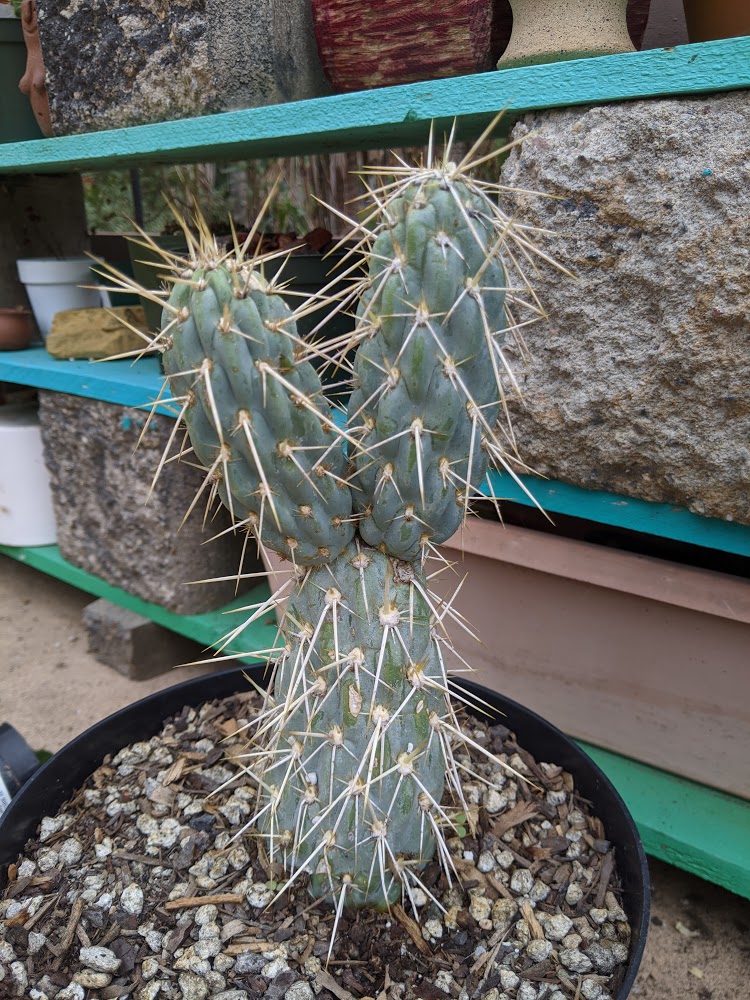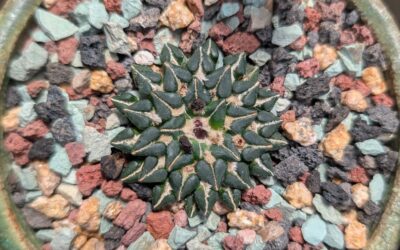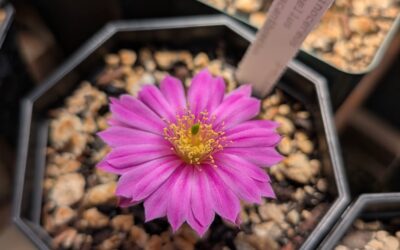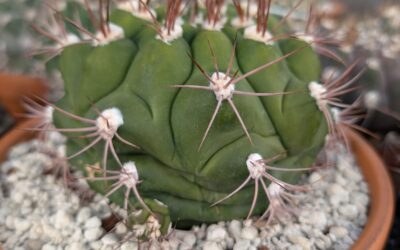Miqueliopuntia miquelii
I had never even heard of this cactus until I saw one become available from one of the international sellers I occasionally order cacti and succulents from. I love pretty much any type of blue cactus, and in this particular order I was planning on snagging a Browningia hertlingiana.
Then I saw this angry, spiky blue thing and knew I needed it. I imported my first one with my order in May of 2020, right ahead of prime summer conditions for rooting.
About the Species
Miqueliopuntia miquelii is the only species in its genus, and it seems to still be commonly lumped in with the Opuntias (which is the genus I found it listed as). In the wild, these are fairly common and widely distributed along the Chilean coast, particularly in the Northern desert area. They are hardy, and grow in a range of soils, making them similar to opuntias in terms of ease of cultivation. They don’t get particularly tall, with most plants developing branches that only reach about 3 feet in height, but they do tend to sprawl with bushy growth to be as much as 15 feet wide.
New growth is typically a pale green in color, developing the blue blush as it hardens off and develops some age. While older growth has large, intimidating spines, new growth does not develop the spines right away. It flowers only when very mature, with this reference suggesting it can take up to 50 years before the first flower!
Cultivation
As with other species from this area, notably copiapoas, a well-draining soil blend is a must. To encourage root growth, I had mine initially in a blend of 50/50 perlite and cactus soil, and acclimated it to our full sun over the space of a couple weeks. I let it dry considerably between waterings, very carefully using the “wiggle test” to determine if roots had set and it was safe to water more often, as the species does enjoy more water during the growing season. After only about 6 – 8 weeks, it had set out enough roots that a gentle wiggle met with resistance, and I began watering it within a day or two of seeing dry soil, rather than stretching it a week or more.
I repotted it into a soil blend (and larger pot) in September, with fresh cactus soil and pumice mixed in rather than perlite. Pumice is my preference for a longer lasting soil additive; I just find perlite is easier for rooting new plants.
These should be kept dry in winter, similar to their friends the copiapoas, and before our first fall rain I moved mine into a protected greenhouse to keep it dry. These should be fairly cold hardy, but need to be kept quite dry when the temperatures are low, and San Diego tends to have cold and wet winters.
They seem similar to other opuntias in that they put out a few “paddles” in spring at the beginning of the growing season, and that is their new growth for the year. I may try a light feeding with a high-potassium fertilizer next spring; we’ll see how spring is looking.
Photo Diary
As I’ve had this cactus for less than a year at this point, I have few photos. It arrived in May after taking about 10 days in shipping, and looked fine when being unboxed. The spines are intense; I want to repot it as little as humanly possible and already somewhat regret my plastic pot choice for the next stage of growth. Hopefully next year plant shows will open back up again, and I’ll be able to snag a large display pot at an event where it can go and never get touched again.
The photo below is when I first potted it in May of 2020. You can see the new growth lacking in the large, intimidating spines, and the plant overall is slightly prunish. Since it arrived labeled as opuntia miquelii, that’s the name I kept with it, although I’ve later learned that is incorrect.
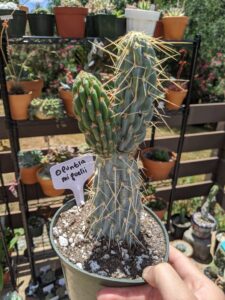
The pot it was in is a 5″ pot, and it was about halfway down. I gave it a couple weeks to adjust to San Diego sunlight and then placed it on the same shelf I keep my copiapoas, old gymnocalycium, and similar high heat, high sun exposure cacti. That shelf worked well and the new green growth expanded over summer to be close to the same size as the older branch on the right, and the plant itself plumped up considerably.
Below is after I repotted it into a larger grow-out pot; the roots were visible through the bottom of the 5″ pot, and I wanted to encourage as much growth as possible so I can either have a large, intriguing specimen plant or take cuttings for propagation.
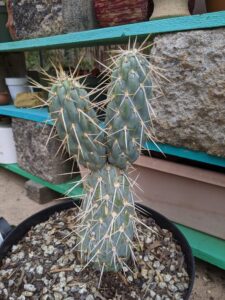
After a summer of sunshine, water, and warmth, it is a much plumper and bluer cactus. The new pot is an 8″ pot, roughly 1 gallon in size, and I’m hopeful the cactus will take advantage of the space to grow considerably next spring. Similar to bonsai, I’ve found if you want to encourage a large specimen plant that you later train for a smaller display pot, they need time with plenty of space to grow to develop size before being restricted.
We also still have several weeks of warmer daytime weather ahead, so the cactus has some time for the roots to settle in before it heads into winter dormancy.
I look forward to seeing this plant grow!

